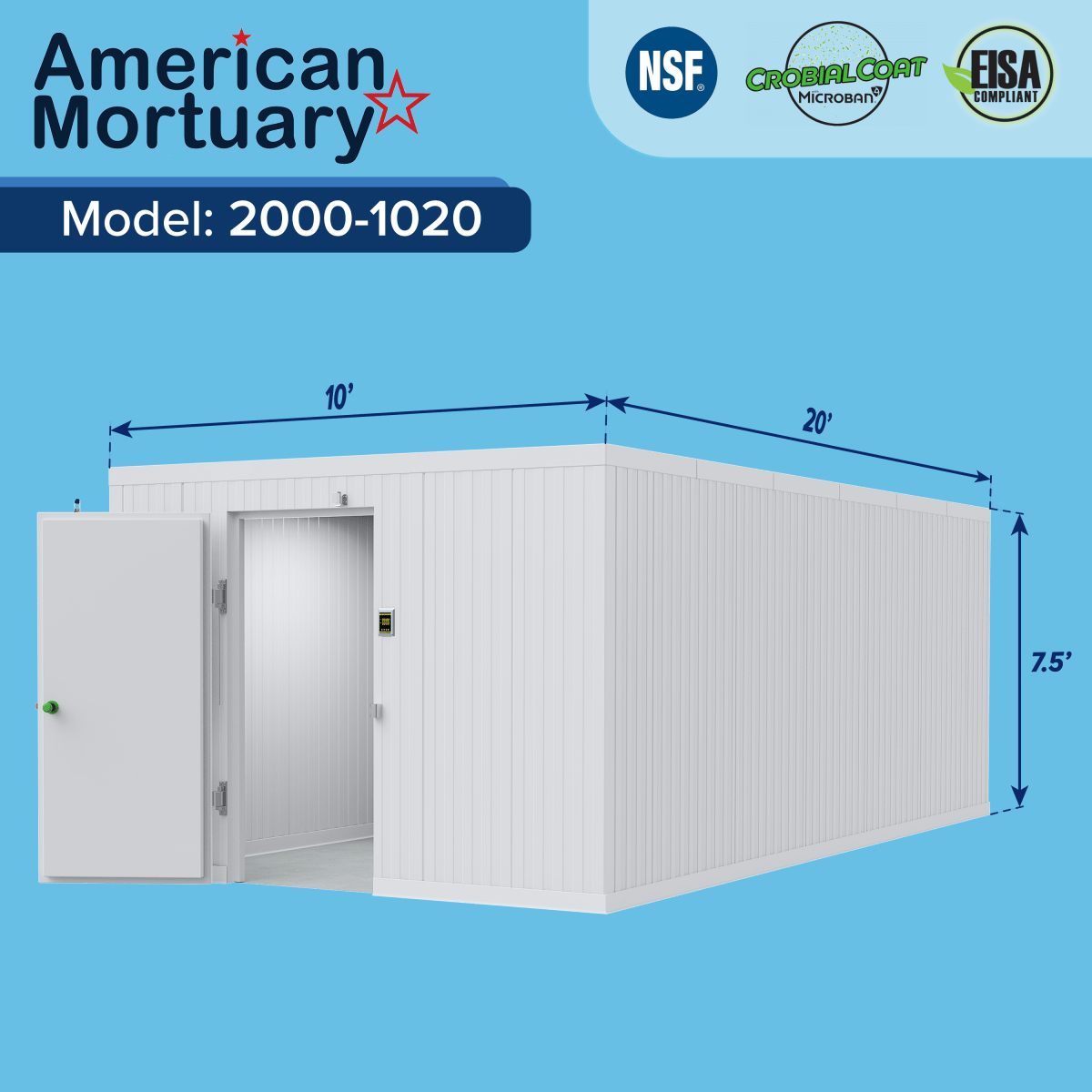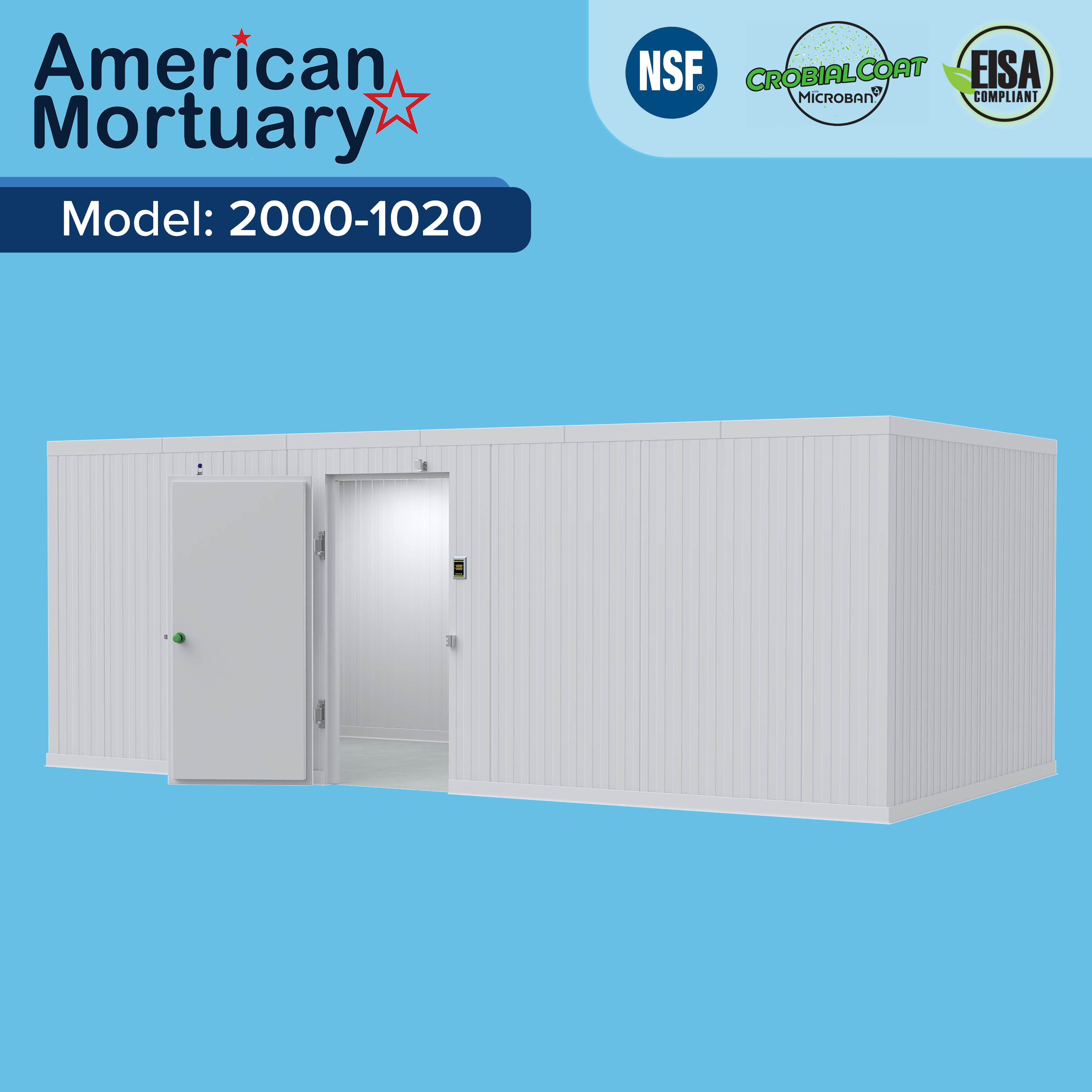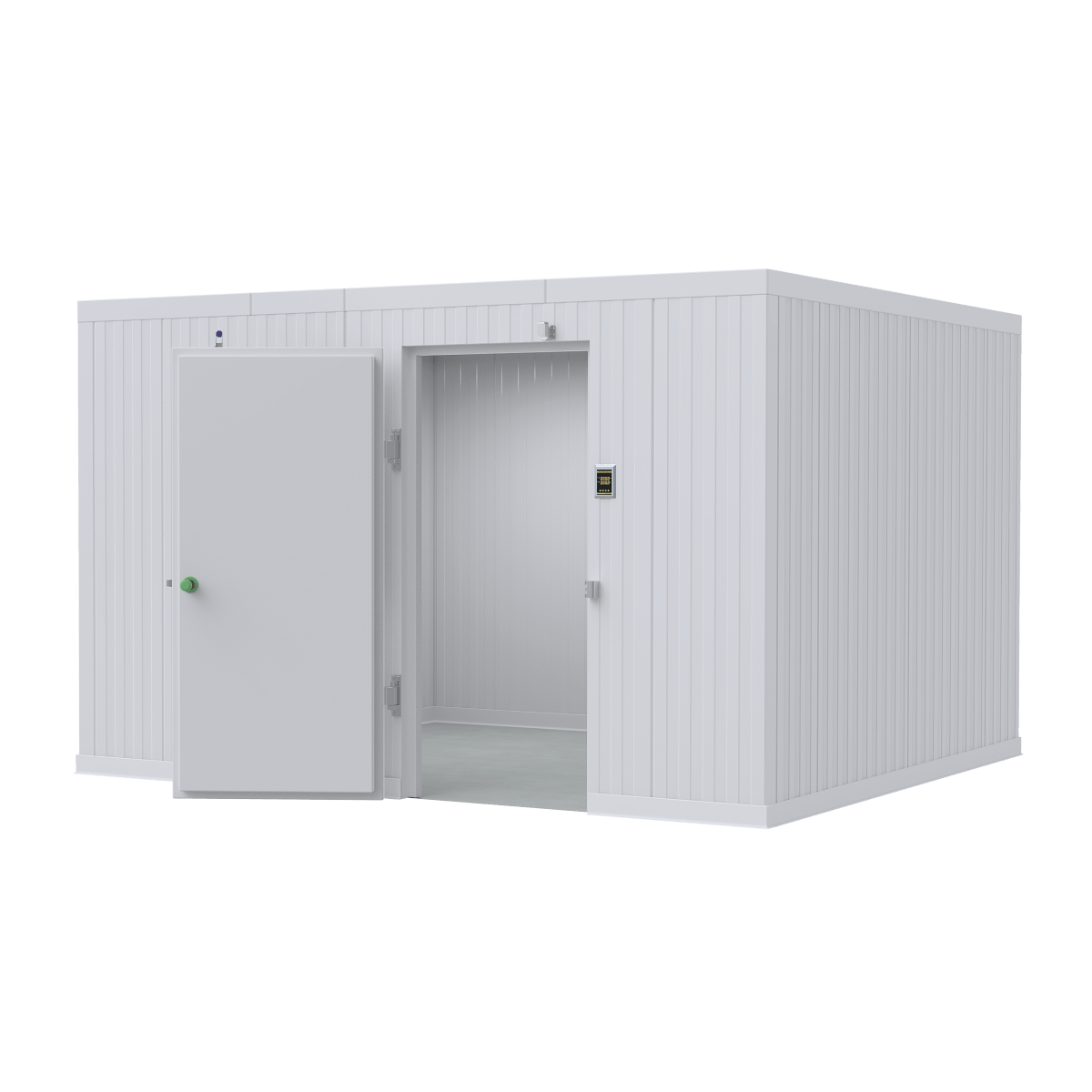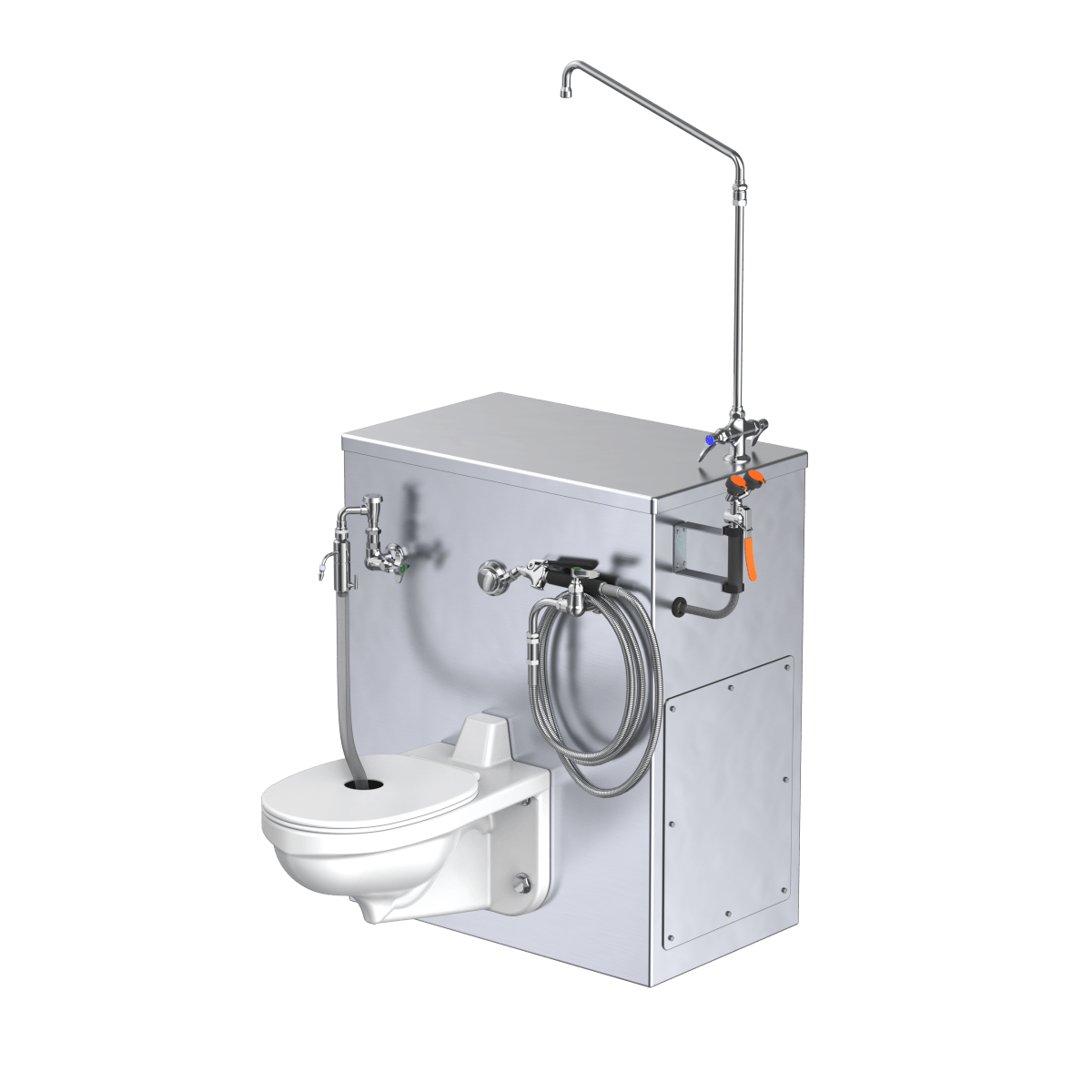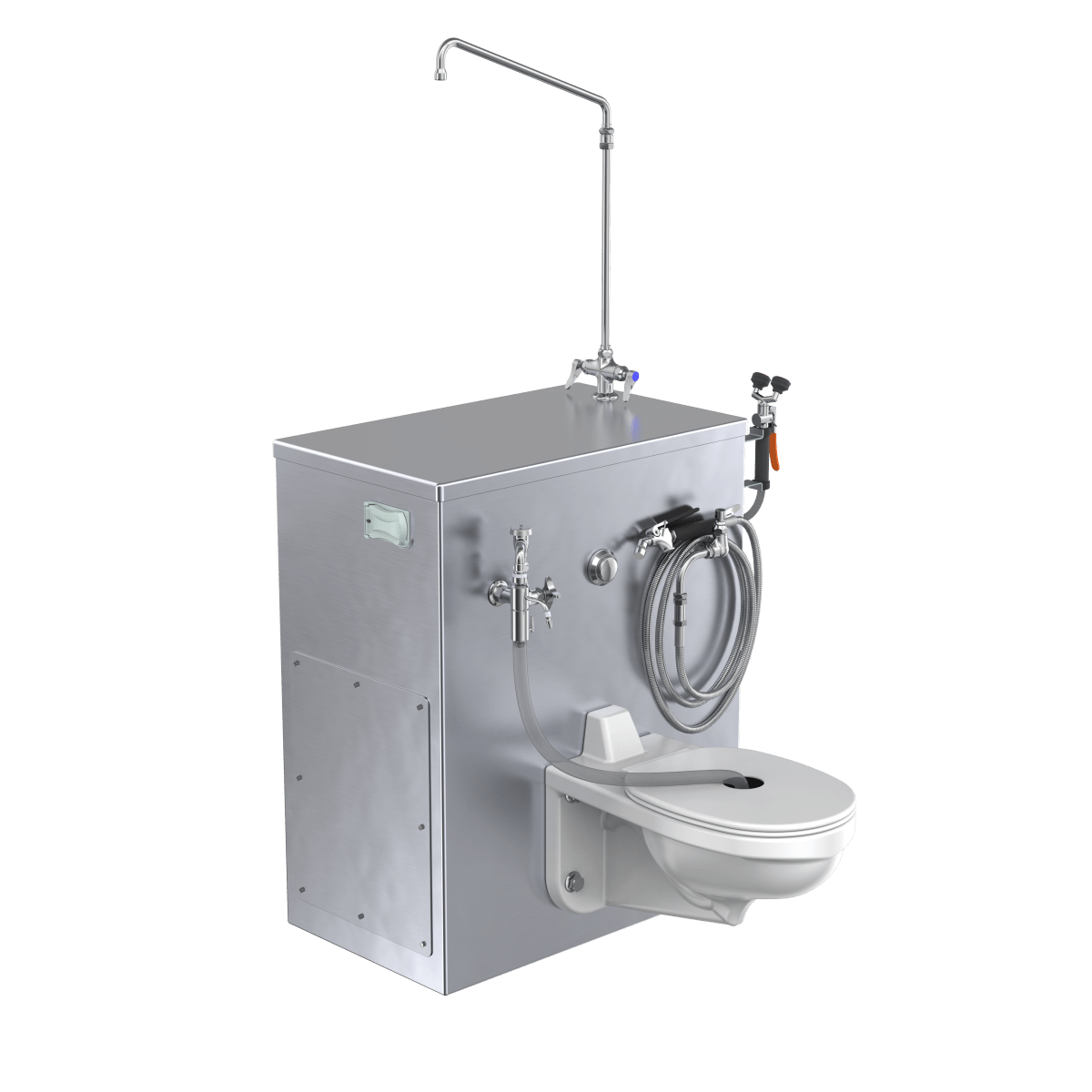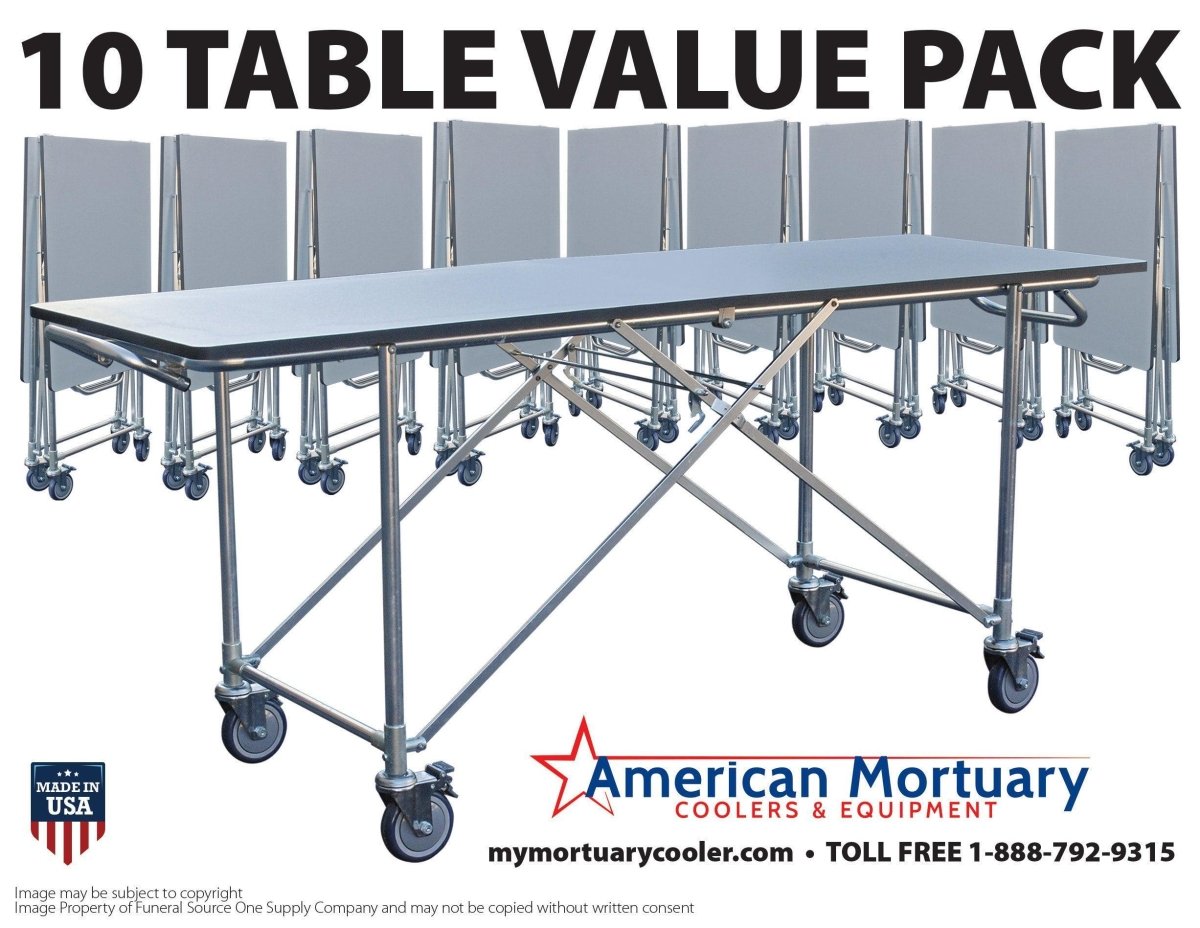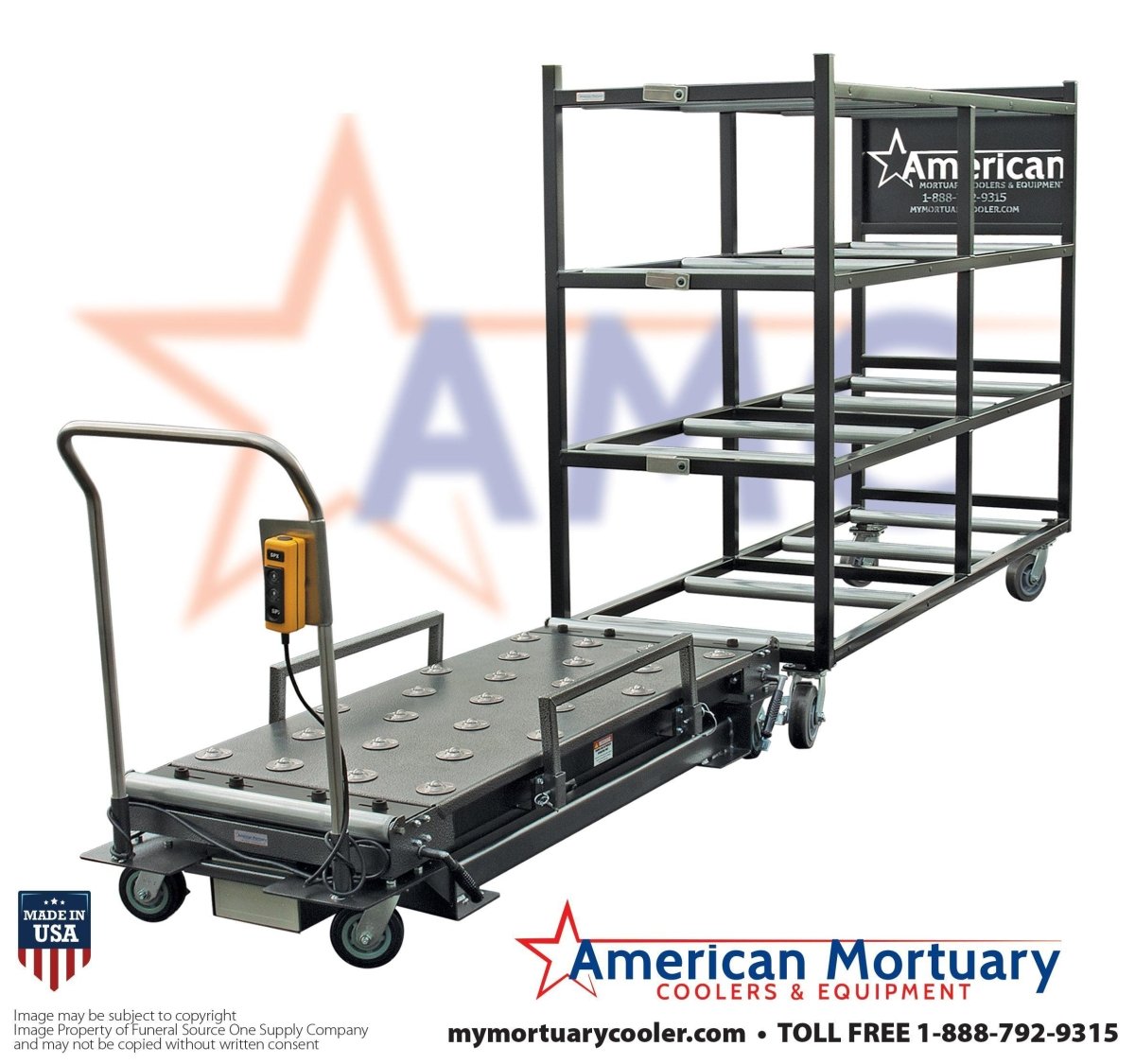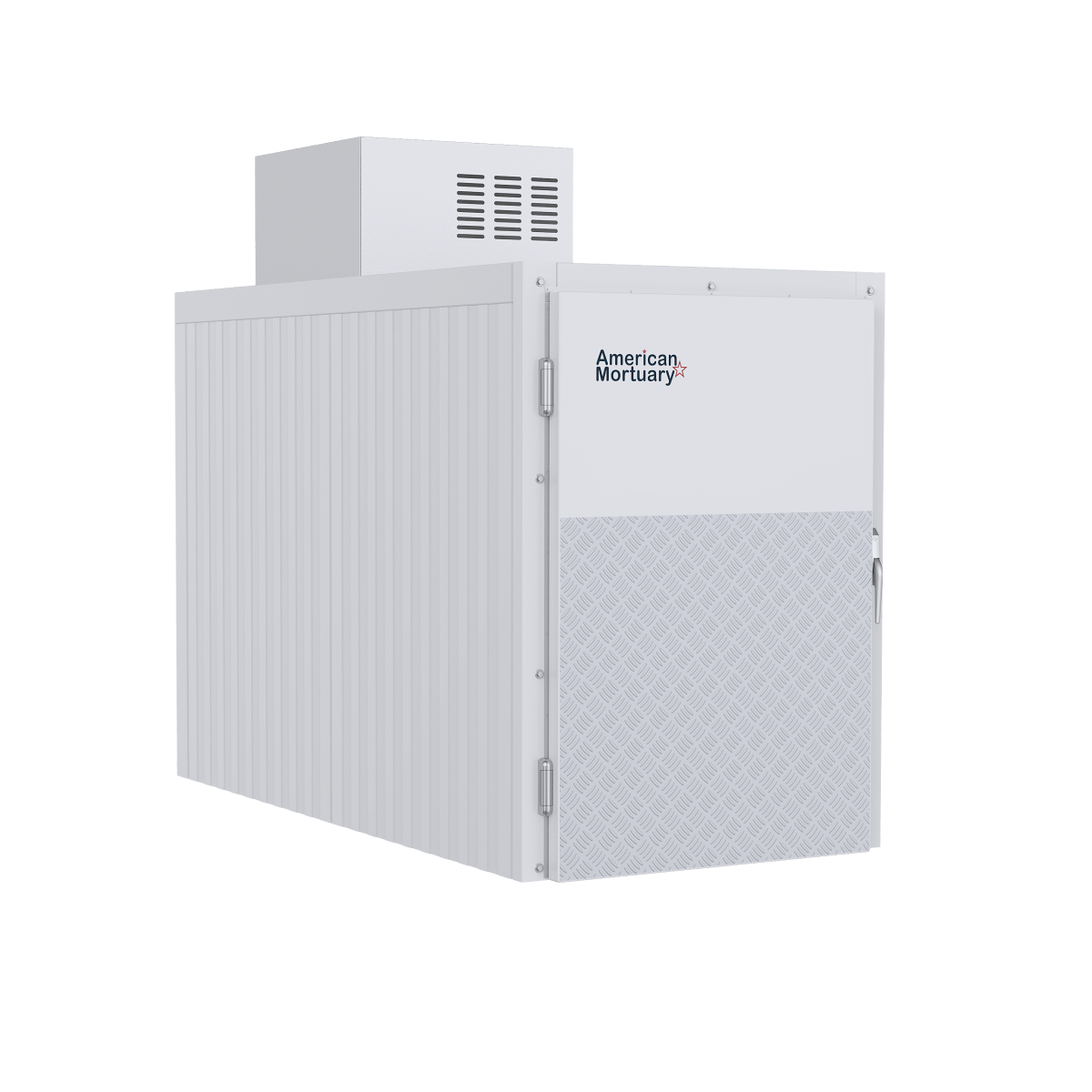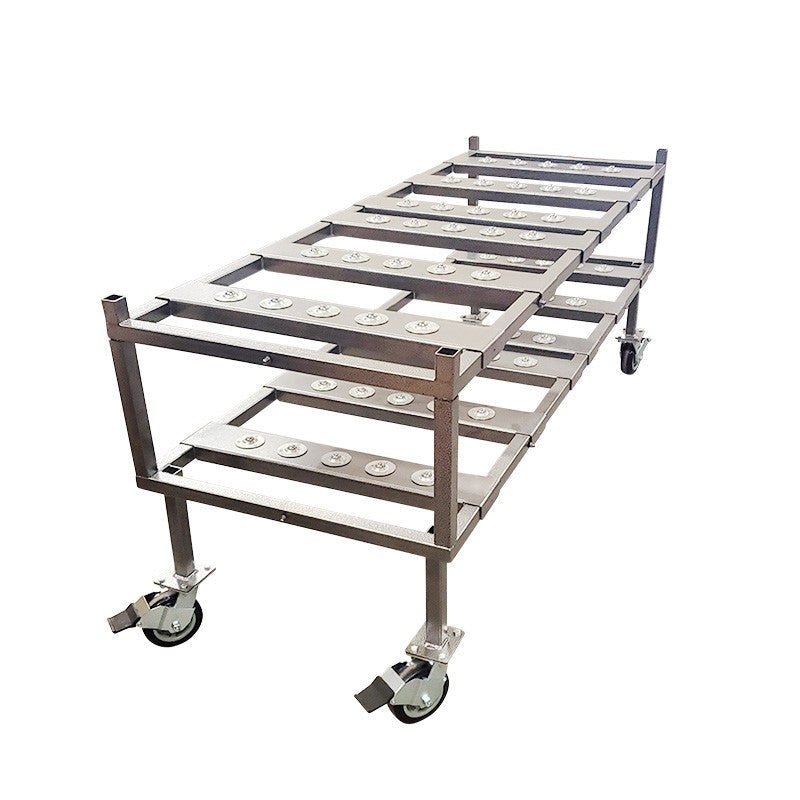In funeral homes, hospitals, medical examiners' offices, and pathology departments nationwide, staff must handle human remains with respect, care, and professionalism. Yet many facilities operate with outdated equipment or inadequate body handling solutions, forcing staff into difficult positions that compromise safety, create injury risk, and detract from the professionalism families expect.
Mortuary lift systems represent essential infrastructure transforming body handling from a physically demanding challenge into a safe, efficient, professional process. These specialized systems enable staff to position, transfer, and prepare remains safely while maintaining the dignity and professionalism that grieving families deserve.
Yet many funeral home operators and facility managers are unaware of modern mortuary lift systems or the advantages they provide. Some facilities continue relying on manual methods that strain staff backs, create injury risk, and reduce operational efficiency. Others have invested in generic material handling equipment that doesn't address the unique requirements of mortuary applications. Still others operate without understanding how proper lift systems can improve operations, enhance safety, and reduce long-term costs.
This comprehensive guide addresses every aspect of mortuary lift systems: what distinguishes professional mortuary-specific systems, how different types serve various operational needs, what specifications matter most for safety and functionality, how to select the right system for your facility, proper installation and training, regulatory compliance requirements, and why investing in professional mortuary lift systems delivers substantial benefits to operations, staff, and profitability.
Understanding Mortuary Lift Systems: Safe Body Handling as Professional Infrastructure
Mortuary lift systems are specialized equipment designed to safely position, transfer, and handle human remains with minimal physical strain on staff. Unlike generic material handling lifts or patient transfer equipment, professional mortuary lift systems are engineered specifically for body handling in funeral home, hospital, and pathology environments.
The engineering requirements for mortuary lift systems differ fundamentally from other lifting applications. Patient transfer lifts designed for hospitals must accommodate living patients who can communicate about comfort and position. Material handling lifts designed for warehouses must move boxes or crates that tolerate rough handling. Mortuary lift systems must respect the dignity of deceased individuals while providing safe, efficient body handling in environments where precision, professionalism, and sensitivity are paramount.
Professional mortuary lift systems address unique challenges: bodies vary in weight and composition, requiring flexible positioning capabilities. Remains must be transferred between storage, preparation, and service areas, demanding mobility and controlled positioning. Staff must access remains with dignity while minimizing physical strain. Systems must integrate with refrigeration environments where temperature and humidity are precisely controlled.
The distinction matters significantly. Generic lifts designed for other applications may technically move bodies but lack the precision, control, and professionalism that mortuary environments require. Worse, they create safety hazards, reduce operational efficiency, and project an image contrary to the professionalism families expect.
Professional mortuary lift systems eliminate these compromises. They enable safe, controlled body positioning. They reduce staff physical strain and injury risk. They project professionalism. They integrate seamlessly with mortuary operations. They transform body handling from a challenging task into an efficient, professional process.
Types of Mortuary Lift Systems: Matching Solutions to Operational Needs
Different facility types and operational requirements demand different mortuary lift system configurations.
Ceiling-Mounted Mortuary Lift Systems: These motorized systems hang from ceiling-mounted tracks or beams, enabling precise vertical and lateral body positioning. Ceiling-mounted mortuary lifts work exceptionally well in preparation rooms and embalming stations where staff transition frequently between storage and preparation areas. The overhead design keeps floor space clear, facilitating easy movement and cleaning.
Portable Mortuary Lift Systems: Mobile lift units provide flexibility for facilities without ceiling infrastructure or those requiring lift capability in multiple locations. Portable mortuary lifts roll on quality casters, enable safe positioning in storage areas or preparation rooms, and offer excellent maneuverability in varied space configurations.
Stretcher Integral Lift Systems: Some modern mortuary stretchers include integrated lift mechanisms, enabling vertical positioning without separate lift equipment. These systems work well in hospitals and medical facilities where body transitions between storage, examination, and morgue areas.
Transfer Bridge Mortuary Lifts: These specialized systems create safe horizontal transfer between storage stretchers, preparation tables, and examination tables. Transfer bridge mortuary lifts minimize manual handling while maintaining body dignity and positioning precision.
Hydraulic Mortuary Lift Tables: Preparation tables with integrated hydraulic lift mechanisms enable staff to position remains at comfortable working heights, then lower to casket level for final positioning. These systems reduce staff strain during extended preparation work.
Electric Body Handling Lifts: Modern electric mortuary lifts provide smooth, controlled positioning with minimal operator effort. Electric systems are increasingly preferred over hydraulic alternatives for reliability and ease of operation.
Heavy-Duty Mortuary Lift Systems: Facilities serving bariatric cases or handling multiple bodies simultaneously may require heavy-duty lift systems with capacity exceeding 500 pounds. These specialized systems ensure safe handling regardless of body size or condition.
Critical Specifications: Selecting Safe and Effective Mortuary Lift Systems
Choosing appropriate mortuary lift systems requires understanding specifications determining safety, functionality, and compatibility with existing equipment.
Weight Capacity and Safety Margins: Mortuary lift systems must safely support typical body weight plus any casket, container, or positioning devices. Professional systems include safety margins—typically 150-200% of rated capacity—ensuring reliability even under maximum conditions. A system rated for 500 pounds should safely handle 750-1000 pounds, preventing dangerous overload situations.
Lifting Speed and Control: Smooth, controlled lifting is essential for body positioning dignity. Systems should enable slow, gradual lifting allowing precise positioning. Fast or jerky movement creates equipment instability and undermines professionalism.
Positioning Precision: Once lifted, remains must be positionable with precision enabling comfortable preparation work or casket placement. Systems should enable fine-adjustment positioning, not just vertical movement.
Operating Environment Compatibility: Mortuary lift systems must function reliably in refrigerated environments. Some hydraulic fluids thicken in cold temperatures, compromising performance. Electric systems and cold-rated fluids are essential in mortuary cooler environments.
Durability and Maintenance Requirements: Regular maintenance ensures reliability. Systems should be designed for easy maintenance with readily available parts. Material selection should resist corrosion in humid mortuary environments.
Safety Features: Professional mortuary lift systems include multiple safety features: emergency stop controls, overload indicators, backup power for ceiling systems, and design preventing unexpected lowering. These features protect staff and remains.
Ease of Operation: Staff must be able to operate lift systems safely and efficiently with minimal training. Intuitive controls and clear labeling support safe operation.
Space and Installation Requirements: Ceiling-mounted systems require structural support and adequate overhead clearance. Portable systems need floor space and power access. Installation requirements should be clearly understood before selection.
Compatibility with Existing Equipment: Mortuary lift systems should integrate seamlessly with preparation tables, stretchers, storage systems, and other equipment. Incompatibility creates inefficiency and safety hazards.
Noise and Vibration: Some lift systems generate noise or vibration affecting the mortuary environment. Professional systems operate quietly and smoothly.
Design Considerations: How Mortuary Lift Systems Integrate with Facility Operations
Professional mortuary lift systems don't function in isolation—they're designed to work seamlessly with complete mortuary operations.
Integration with Preparation Tables: Mortuary lift systems should coordinate precisely with preparation tables, enabling smooth transitions from lifting to preparation work. Synchronized height adjustment between lift and table supports efficient workflow.
Stretcher and Storage Compatibility: Bodies on refrigerated stretchers must transfer safely to lift systems and preparation surfaces. Proper integration enables smooth transitions without manual repositioning.
Workflow Optimization: Well-designed mortuary lift systems support logical workflow from storage through preparation through service arrangement. System positioning should facilitate this progression, not create obstacles.
Staff Safety and Ergonomics: Mortuary lift systems should enable staff to work at ergonomic heights, reducing back strain and injury risk. Staff should never need to lift body weight manually when proper lift systems are available.
Facility Space Efficiency: Lift systems should maximize space utilization. Ceiling-mounted systems preserve floor space; portable systems should nest compactly when not in use.
Refrigeration System Compatibility: In refrigerated environments, lift systems must operate reliably at cold temperatures. Material selection and fluid specifications are critical.
Accessibility for Maintenance: Technicians must be able to access and service lift systems without disrupting facility operations. Design should support this need.
Installation and Commissioning of Mortuary Lift Systems
Proper installation determines whether mortuary lift systems perform safely and effectively.
Site Assessment: Professional installation includes thorough facility assessment: ceiling structural capacity evaluation for mounted systems, space confirmation for portable systems, electrical requirements, refrigeration environment effects, workflow analysis, and staff training needs.
Structural Verification: Ceiling-mounted systems require structural engineering verification ensuring beams and installation points support rated loads safely. Professional installers verify structural adequacy before installation.
Electrical Integration: Mortuary lift systems require proper electrical service: dedicated circuits, emergency power capabilities where appropriate, and safety disconnects. Professional electrical integration is essential.
Equipment Setup and Adjustment: After installation, systems must be properly calibrated: height adjustment for table compatibility, control system testing, safety system verification, and load testing with rated weights.
Safety Verification: Before accepting installation, mortuary lift systems must undergo comprehensive safety testing: emergency stop functionality, overload indicators, backup systems, cable or mechanical integrity, and safe operation across full range.
Staff Training: Comprehensive training ensures all staff understand proper operation, safety procedures, maintenance requirements, and emergency response. Well-trained staff prevent injuries and maximize equipment effectiveness.
Documentation: Professional installation includes detailed documentation: system specifications, safety features, maintenance procedures, emergency protocols, and warranty information.
Safety and Regulatory Compliance for Mortuary Lift Systems
Mortuary lift systems are subject to safety and regulatory requirements at multiple levels.
OSHA Workplace Safety Standards: Mortuary lift systems must comply with OSHA requirements for worker safety. Systems should prevent unexpected equipment failure, provide operator controls with clear labeling, include emergency stop mechanisms, and support safe working practices.
Load Capacity Ratings and Labeling: Systems must clearly display rated capacity and be used within those limits. Operators must understand and respect capacity limitations. Exceeding rated capacity creates safety hazards and liability.
State Funeral Service Licensing: Some states include body handling requirements in funeral service licensing standards. Professional mortuary lift systems demonstrate commitment to staff safety and regulatory compliance.
Healthcare Facility Standards: Facilities serving hospitals or medical examiners' offices face healthcare facility standards for equipment and staff safety. Professional mortuary lift systems meet these standards as baseline features.
Equipment Certification and Compliance: Professional mortuary lift systems should have appropriate certifications (UL, CE, or equivalent) confirming safety compliance. Reputable manufacturers provide documentation proving compliance.
Insurance and Liability Considerations: Proper equipment reduces injury risk, supporting insurance claims and demonstrating duty of care to staff. Professional mortuary lift systems reduce facility liability.
Common Problems and Safety Concerns with Mortuary Lift Systems
Understanding common issues helps facilities select and maintain safe systems.
Inadequate Weight Capacity: Systems rated for insufficient capacity create overload hazards. Professional mortuary lift systems include adequate safety margins for unexpected weight situations.
Temperature-Related Performance Issues: Hydraulic systems can fail in cold mortuary environments. Cold-rated fluids or electric systems prevent temperature-related failures.
Poor Positioning Control: Systems enabling only vertical movement lack precision for effective preparation work. Quality mortuary lift systems enable full positioning control.
Operator Unfamiliarity: Staff unfamiliar with proper operation create safety hazards. Comprehensive training prevents most operator-related problems.
Inadequate Maintenance: Neglected systems deteriorate and fail unexpectedly. Regular maintenance prevents most equipment failures.
Integration Failures: Systems that don't integrate with preparation tables or storage equipment create inefficiency and safety risks. Quality systems integrate seamlessly.
Power Failures and Backup Systems: Systems without backup power can create dangerous situations during power outages. Professional systems include backup capabilities.
Evaluating Mortuary Lift System Providers: Expertise and Safety Matter
Selecting quality mortuary lift systems requires evaluating providers carefully.
Mortuary Industry Specialization: Providers specializing exclusively in mortuary and medical equipment understand unique requirements better than generalists. Specialists understand funeral service operations and regulatory environment.
Engineering and Safety Expertise: Quality providers employ engineers with safety expertise. Systems should be designed and tested for mortuary-specific requirements, not adapted from other applications.
Materials and Construction Quality: Premium providers use high-quality materials: stainless steel for corrosion resistance, cold-rated hydraulic fluids, heavy-duty electric components. Quality construction ensures reliability and longevity.
Safety Certifications: Reputable providers ensure systems meet appropriate safety standards (UL, CE, ANSI). These certifications confirm independent safety verification.
Installation and Training Expertise: Professional providers employ technicians trained in safe installation and commissioning. Comprehensive staff training is included as standard.
References and Track Record: Reputable providers demonstrate successful installations across diverse facility types. References from satisfied customers validate expertise and reliability.
Support and Service: Professional providers offer responsive support, readily available parts, and maintenance service ensuring long-term equipment performance.
Warranty and Liability: Comprehensive warranties covering equipment and labor, plus clear liability documentation, indicate provider confidence and professionalism.
American Mortuary Coolers: Mortuary Lift System Excellence
American Mortuary Coolers specializes in professional mortuary lift systems engineered specifically for safe, dignified body handling in funeral homes, hospitals, and pathology environments. Our lift systems are designed with deep understanding of mortuary operations, staff safety requirements, and the professionalism families expect.
Our mortuary lift systems feature:
- Safe weight capacity with appropriate safety margins
- Smooth, controlled positioning enabling precision work
- Cold-temperature rated components for refrigeration environments
- Integration with preparation tables and storage equipment
- Multiple safety features and emergency controls
- Quiet, reliable operation minimizing environmental disturbance
- Durable construction resisting mortuary environment corrosion
- Professional design projecting competence and respect
- Intuitive controls enabling safe operation with minimal training
- Backup systems ensuring reliability during power variations
Our experienced technicians install mortuary lift systems properly, conduct comprehensive safety testing, train staff thoroughly, and provide ongoing support ensuring long-term reliability.
Best Practices: Maximizing Safety and Effectiveness of Mortuary Lift Systems
Professional mortuary lift systems deliver maximum benefit when operated and maintained properly.
Operator Training: All staff who operate lift systems should receive comprehensive training on proper use, safety procedures, emergency protocols, and maintenance requirements. Refresher training should occur annually and when staff changes.
Equipment Inspection: Regular visual inspection identifies developing problems: fluid leaks, cable deterioration, electrical issues, or structural damage. Catching problems early prevents failures.
Load Testing: Periodic load testing (annually or per manufacturer recommendations) verifies safe operation under rated capacity. Testing ensures systems perform reliably when needed.
Maintenance Schedules: Following manufacturer maintenance schedules prevents most problems. Regular fluid changes (hydraulic systems), electrical system inspection, and mechanical component service extend equipment lifespan.
Temperature Monitoring: In refrigerated environments, temperature monitoring ensures systems continue functioning properly in cold conditions. Temperature variations might indicate system problems.
Documentation: Maintaining accurate records of inspections, maintenance, testing, and repairs proves compliance and enables proactive maintenance planning.
Safe Operating Practices: Staff should never exceed rated capacity, should use equipment only as designed, and should report any abnormal operation immediately. Clear operational procedures prevent misuse.
Emergency Preparedness: Facilities should have procedures for equipment failure scenarios, backup body positioning methods, and staff safety protocols ensuring continuity if lift systems become unavailable.
Emerging Trends: Innovation in Mortuary Lift Systems
The mortuary equipment industry continues advancing with new lift system innovations.
Electric and Hybrid Systems: Modern electric and hybrid lift systems offer advantages over older hydraulic technology: quieter operation, better cold-temperature performance, reduced maintenance, and improved reliability.
Remote Control and Automation: Contemporary lift systems increasingly include remote controls and automated positioning sequences, enabling safer operation and reducing operator effort.
Smart Monitoring Systems: Modern lifts can include monitoring systems tracking usage, identifying maintenance needs, and alerting managers to potential problems before failures occur.
Ergonomic Design Advances: New systems emphasize ergonomic design: operator controls at comfortable heights, reduced physical force required, smooth operation minimizing vibration.
Integration with Digital Systems: Advanced systems integrate with facility management systems, enabling coordinated facility monitoring and maintenance scheduling.
Sustainability Focus: Modern lift systems emphasize efficient operation reducing energy consumption and environmental impact, supporting facility sustainability goals.
The Financial Case: Understanding Mortuary Lift System Investment Value
Professional mortuary lift systems represent significant investment, yet understanding their value justifies the expense.
Initial Equipment Cost: Quality mortuary lift systems range from $10,000 to $75,000+ depending on type and capacity. While substantial, this represents reasonable investment amortized over 15-20 year lifespan.
Staff Safety and Injury Prevention: Proper lift systems dramatically reduce back injuries, strain injuries, and physical trauma to staff. Injury prevention reduces workers' compensation claims, lost time, and recruitment costs. A single serious back injury might cost $50,000-$500,000 in medical expenses and lost productivity.
Operational Efficiency: Mortuary lift systems enable faster body transitions and more efficient preparation work. Time savings directly increase operational capacity and revenue.
Staff Retention and Satisfaction: Proper working conditions improve staff satisfaction and retention. Reducing turnover eliminates recruitment and training costs exceeding $10,000 per staff member.
Professional Reputation: Professional equipment including proper lift systems projects competence and respect to families. Enhanced reputation generates referrals and premium service demand.
Insurance and Liability: Proper equipment demonstrates duty of care, potentially reducing insurance premiums and preventing liability claims. A single negligent injury claim might exceed equipment cost substantially.
Regulatory Compliance: Professional lift systems support regulatory compliance reducing fines, licensing suspension, and facility closure risk.
Equipment Longevity: Quality systems last 15-20 years with proper maintenance, making annual cost modest compared to benefits delivered.
ROI Example: A $30,000 mortuary lift system preventing one serious staff injury (potentially costing $100,000+), improving operational efficiency (enabling 10% capacity increase worth $50,000+ annually), and enhancing professional reputation (generating 20+ additional services annually at $3,000 each = $60,000) pays for itself in months while improving long-term operations.
Making Your Decision: Selecting Quality Mortuary Lift Systems
Before selecting mortuary lift systems, ensure you've addressed these critical questions:
- Have you accurately assessed your facility's lift system requirements?
- Does your space support ceiling-mounted or portable systems better?
- What body weight variations must systems accommodate?
- How do lift systems integrate with existing preparation tables and equipment?
- What safety certifications and standards do systems meet?
- Can providers demonstrate successful installations in similar facilities?
- What warranties, maintenance programs, and support are offered?
- Have you evaluated total cost of ownership including maintenance?
- What staff training and documentation will be provided?
- Does the provider demonstrate commitment to safety and professionalism?
Taking time to answer these questions ensures you select mortuary lift systems serving your facility safely and effectively for decades.
Conclusion: Professional Mortuary Lift Systems as Essential Safety Infrastructure
Mortuary lift systems represent essential infrastructure transforming body handling from a physically demanding, injury-prone task into a safe, efficient, professional process. Selecting professional mortuary lift systems engineered specifically for funeral and medical environments, installing them properly, training staff thoroughly, and maintaining them proactively ensures reliable, safe operation for 15-20 years.
The distinction between professional mortuary lift systems and generic material handling equipment becomes evident immediately in safety, control, professionalism, and operational efficiency. Facilities that invest in professional mortuary lift systems from specialists enjoy substantial benefits: improved staff safety, reduced injury risk, enhanced operational efficiency, professional reputation improvements, and long-term cost savings far exceeding initial investment.
Whether you're opening a new funeral home, upgrading aging facilities, expanding service offerings, or improving staff safety, professional mortuary lift systems enable your facility to serve families professionally while protecting your most valuable asset—your staff. American Mortuary Coolers specializes in mortuary lift systems engineered for your specific operational needs and installed by technicians understanding funeral service requirements.
Contact American Mortuary Coolers today to discuss how professional mortuary lift systems can transform your facility's safety and operational performance.
CALL-TO-ACTION SECTION
Ready to improve facility safety with professional mortuary lift systems?
American Mortuary Coolers specializes exclusively in mortuary lift systems and complete body handling solutions engineered for safe, dignified body positioning in funeral homes, hospitals, and pathology environments.
Our professional mortuary lift systems include:
- Ceiling-mounted motorized lift systems with precision positioning
- Portable lift systems providing flexibility across multiple locations
- Hydraulic and electric positioning options
- Cold-temperature rated components for refrigeration environments
- Safety certifications meeting OSHA and healthcare facility standards
- Integration with preparation tables and storage equipment
- Smooth, controlled positioning enabling dignified body handling
- Professional installation by trained mortuary technicians
- Comprehensive staff training and safety protocols
- Responsive support and readily available parts
- 15-20 year equipment lifespan with proper maintenance
Contact American Mortuary Coolers today for your facility assessment and mortuary lift system solution:
📞 Phone: 1-888-792-9315 📧 Email: cool@mymortuarycooler.com 🌐 Website: mymortuarycooler.com
Our specialists understand funeral home operations and the safety challenges your staff faces. We'll assess your facility's needs, recommend ideal lift system solutions, and provide transparent pricing.
Why funeral professionals choose American Mortuary Coolers for mortuary lift systems:
- Purpose-built engineering for funeral service body handling requirements
- Professional safety certifications and compliance assurance
- Cold-temperature rated components for mortuary environments
- Smooth, controlled positioning enabling dignified operations
- Professional installation and comprehensive staff training
- Integration with complete facility systems and equipment
- Responsive emergency support and maintenance programs
- 15-20 year equipment lifespan ensuring long-term value
- Proven track record protecting staff safety nationwide
Don't compromise on staff safety. Invest in professional mortuary lift systems engineered for your facility's specific needs.
American Mortuary Coolers: Professional Mortuary Lift Systems for Safety and Excellence


